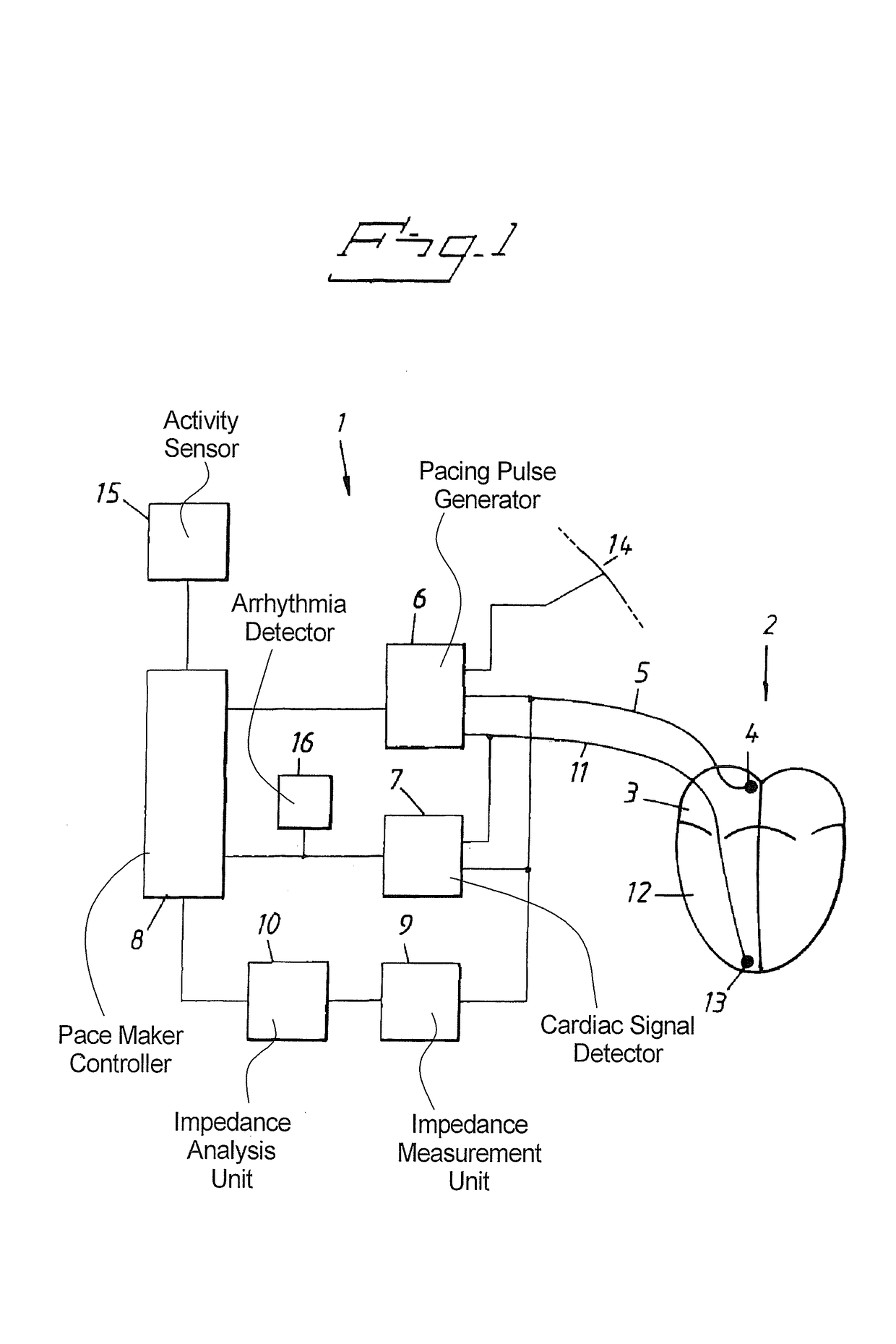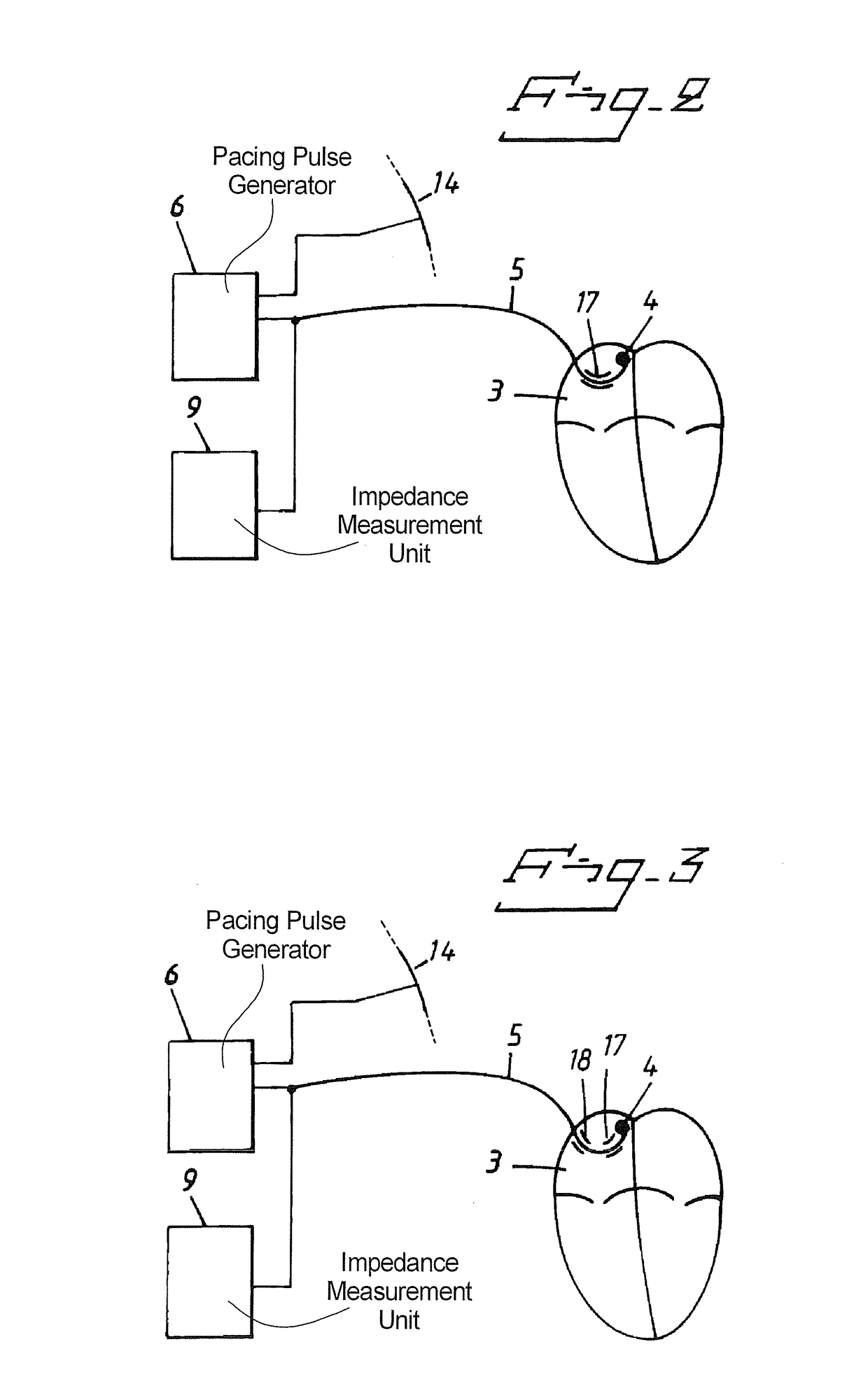Heart stimulator detecting atrial arrhythmia by determining wall distension by impedance measuring
a heart stimulator and impedance measurement technology, applied in heart stimulators, electrotherapy, therapy, etc., can solve the problems of increasing the pressure of the venous return, increasing the atrial distension during atrial fibrillation, and reducing the ventricular rhythm of the heart, so as to reduce the atrial remodeling, and reduce the atrial distension
- Summary
- Abstract
- Description
- Claims
- Application Information
AI Technical Summary
Benefits of technology
Problems solved by technology
Method used
Image
Examples
Embodiment Construction
[0014]FIG. 1 shows a simplified block diagram of a dual chamber pacemaker according to the invention. The patient's heart 2 is connected via atrial electrode 4 and atrial lead body 5 to the pacemaker 1. The patient's heart 2 is also connected via ventricular electrode 13 and ventricular lead body 11 to the pacemaker 1. The pacemaker 1 contains the following functional blocks: pacing pulse generator 6, cardiac signal detector 7, pacemaker controller 8, impedance measurement unit 9, impedance analysis unit 10, activity sensor 15 and pacemaker encapsulation 14. In normal operation the pacemaker controller 8 orders the pacing pulse generator 6 to deliver an atrial pacing pulse via atrial leads 4,5 if no intrinsic P-wave has occurred before the end of the atrial escape interval. The paced or sensed atrial event starts a paced or sensed AV-delay in the pacemaker controller 8. The sensed AV-delay is typically slightly shorter than the paced AV-delay in order to obtain the same delay betwee...
PUM
 Login to View More
Login to View More Abstract
Description
Claims
Application Information
 Login to View More
Login to View More - R&D
- Intellectual Property
- Life Sciences
- Materials
- Tech Scout
- Unparalleled Data Quality
- Higher Quality Content
- 60% Fewer Hallucinations
Browse by: Latest US Patents, China's latest patents, Technical Efficacy Thesaurus, Application Domain, Technology Topic, Popular Technical Reports.
© 2025 PatSnap. All rights reserved.Legal|Privacy policy|Modern Slavery Act Transparency Statement|Sitemap|About US| Contact US: help@patsnap.com


